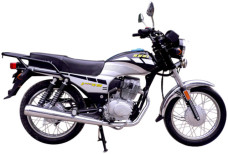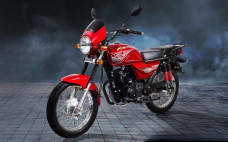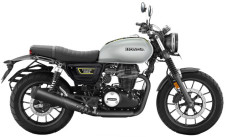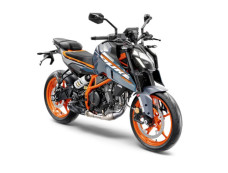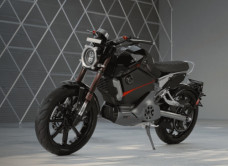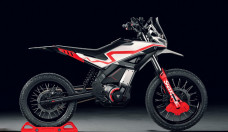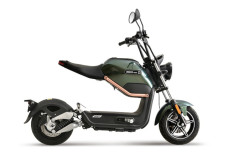We all know what an engine does in any machine that uses fuel. An engine is like a reaction chamber that converts the mixture of fuel and air to usable kinetic energy. But every reaction leaves an amount of unwanted products or at least that's what our science books taught us. This is where the exhaust system comes into play. A valve opens up in the engine right after combustion to clear the chamber for the next cycle and these gases are pushed out through the exhaust.

Now, we all might think of the exhaust as something that serves its purpose for sciences' sake but we tend to overlook the factors that led to the design of exhausts. Much of the gases that come out of the engine are toxic and to inhale these gases by the user will lead to serious health issues in the long run. The heat developed after combustion has to be vented into the outdoors safely and it should not interfere with the rider as well and the exhaust pipes does what is needed. Besides, the sound that emanates from an engine without an exhaust might sound chaotic for the general population. Much of the modern exhaust systems are designed to reduce noise levels so as to suit the user and the people in the street.
Exhaust systems on Bikes
Most twin-cylinder engines have a single exhaust section, commonly known as a two-into-one, literally two pipes leading into one. Another version would be separate pipes all the way from the engine.

On the more powerful bikes, the ones with four-cylinder engines, the manufacturers use the twin exhaust system, adhering to the rules and regulations of a country.

What is an exhaust manifold?
Many of us might have come across this term in our lives and we might be wondering what purpose does it actually serve. An exhaust manifold is a design feature that is mounted to the exhaust port of the engine to capture the exhaust gases. Different manufacturers use different methods to design them. However, most of them look at ways to save material and to reduce costs and also to utilize minimum amount of space. From a general perspective, this looks like a good idea but where it fails is more like sacrificing your own machine. The production vehicles are equipped with exhaust systems that are largely inefficient as it does not consider the flow of exhaust gases.

Back Pressure
Back pressure is sort of like an uncontrollable group of people at.. let's say an airport. Here's the scientific view of it: Single-cylinder engines fire at different times and obviously, the exhaust leaves at different times, and there's an interval created and the exhaust after the first cycle would not have left completely before the arrival of the second cycle exhaust. This creates a pressure in the system i.e the first cycle gases have no way out and are trying to push their way back into the engine. This is called back pressure. Why is this bad for the engine? Due to back pressure, the engine suddenly comes face to face with conditions it was never meant to be working in, resulting in inefficient performance of the engine.
Your exhaust right now
The exhaust system on your bike right now is designed to run for optimum performance while at the same time complimenting the bike's design. On a serious note though, the exhaust system on most bikes is heavy and does not fully generate maximum performance of the engine and doesn't look all that great. It hurts, yes.
Why you need to change your exhaust
From the earlier sections, we infer that changing the exhaust system can:
+ Improve the performance of the engine
+ Improve the overall appearance of the bike
+ Make the engine more efficient (debatable)
+ Improve noise levels (insanely loud to a whisper).
Before modifying your exhaust system, make sure what you want to achieve by changing your exhaust and if you're ready to face the consequences because well, nothing is perfect. It's also equally important to know the facts behind different performance upgrades, which I'll be talking about, before actually making the changes.
Performance Exhaust facts
Performance exhaust upgrades basically come in two types:
+ Mufflers or slip-on/bolt-on systems
+ Full system
Mufflers or slip-on/bolt-on systems are basically the cheapest ways to upgrade any stock exhaust systems. They are easy to install and can be afforded by anyone who at least owns a bike. Performance does not get a big boost with a slip-on but with lighter materials, a lot of excess weight can be removed using lightweight slip-ons. The sound levels can also be managed with different mufflers as some get glass-wool coating inside the exhaust pipe and can also absorb some of the soot.

Full exhaust system upgrades are meant for those who are willing to spend a large part of their savings or even the whole thing and those who are willing to spend a large chunk of their time with their machine. To make a full upgrade of the exhaust system, everything from the exhuast port to the exit of the pipe needs to changed. This means, exhaust manifolds that are much lighter and which are able to direct exhaust gases without much resistance. The fuel injection (modern bikes) needs to be adjusted accordingly as well to fine tune the engine to come in terms with the new part. A full upgrade needs a lot of time to think through the elements that are to be installed and what is to be removed and what gains and losses to be expected from the change. It would be wise to consult an expert mechanic who deals with such upgrades to be on the safe side. Headers are also something that could be added to the full exhaust system upgrade. Headers are basically after-market parts that are attached to the exhaust port to make the passage of the exhausts effortless and in turn, reduce back pressure. Headers improve the performance of the engine drastically. Titanium headers are available which can reduce the overall weight. Since the headers reduce back pressure, the efficiency of the engine is increased, something that can be used as a counter argument against the disadvantages of performance upgrades. Gaskets act as a safety device to prevent leakage that can lead to blueish tinge on the exhaust pipes.

Considering the modern motorcycle technology, the stock bike comes with a valve called the servo controlled exhaust valve. These valves were introduced back in 2005, and serves the purpose of controlling the flow of the exhaust gases and also back pressure. Some full exhaust performance kits require the valve to be removed but some after-market manufacturers provide extra support so that the performance kit can be installed on to your bike.
The Sound
Sound is something that is optional with exhaust upgrades and most of the after-market manufacturers create interesting designs with their slip-on exhausts using lightweight materials and also racks up the decibels while on the street and should possibly attract quite a number of ears. The problem is, however, many laws imposed in several countries prohibit the usage of such exhaust systems that can be a nuisance to the public and could get the rider in court. Therefore, it is of utmost importance to know the rules and regulations of the country you're in before trying on a new upgrade.
The bottom line is that yes, exhaust upgrades are good for the bike, provided you know what you're doing and also, the efficiency of a motor does not depend solely on how it's made or what sort of fuel goes into it but how the rider or the owner maintains it and how the bike is ridden. Developing a sense of how each system works on the bike is essential to be a good user of a bike, nevertheless, any machine. The engine works in tune with all the other elements that runs with it and changing one part of that entire system might be detrimental to the working of the whole system itself and so, there is a need to know how to fine tune the engine to make it work with newly installed parts/upgrades and if you're not someone who can't really comprehend the works, it's best to consult a mechanic who can help you with it.
Most high performance bike manufacturers follow certain quality guidelines to ensure that the customer gets the real deal from the product. They design exhaust systems that are powerful enough and might sound good but with the numerous laws that prohibit further usage, the full extent of the benefits of the design is not achieved. The manufacturers also use dyno-testing to ensure quality standards are met with, and that the product fully conforms to the real world conditions.
Here's a list of after-market manufacturers of exhaust systems:
-Yoshimura
- Akrapovic
- Remus exhaust
- Leo Vince
- Arrow exhaust
- Two brothers
- Vance & Hines
- Graves Motorsports

